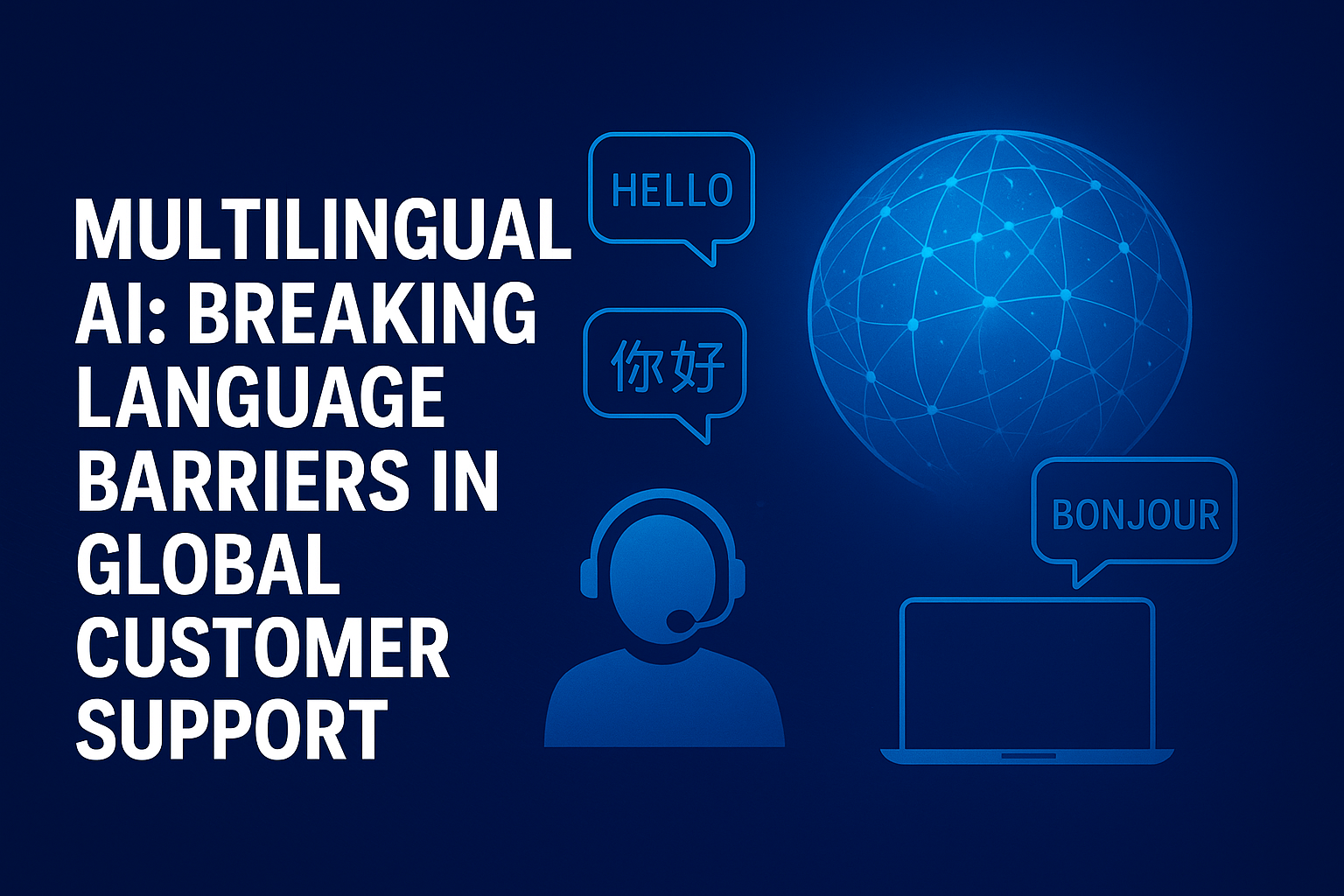
Introduction: A World Without Language Barriers
In today’s hyper-connected economy, businesses can reach customers in every corner of the globe. But with global reach comes a major challenge: language diversity. Research shows that 75% of consumers prefer to buy products in their native language (CSA Research)—and over 40% won’t purchase if support isn’t offered in their language.
Traditional multilingual customer support often relied on hiring large teams of native speakers or outsourcing to language vendors, which was costly and inconsistent. Enter multilingual AI: advanced artificial intelligence systems capable of real-time translation, natural language processing (NLP), and intent recognition across dozens of languages. This technology is transforming global customer support from a barrier-ridden process into a seamless, scalable experience.
The Rise of Multilingual AI in Customer Service
AI-powered language solutions are no longer futuristic—they’re already mainstream. According to Gartner, by 2025, 80% of customer service organizations will move toward AI-driven channels such as messaging, chatbots, and virtual assistants. Many of these tools are equipped with multilingual capabilities, enabling businesses to serve diverse customers without additional human staffing.
Some leading multilingual AI solutions can now handle over 100 languages in real time, bridging communication gaps across continents. For example, Unbabel combines machine translation with human editing to help global brands deliver consistent multilingual support at scale. Similarly, Google’s AI translation models have reached over 200 supported languages.
The result? Businesses can now deliver 24/7 multilingual support with accuracy, speed, and personalization—something impossible just a few years ago.
Why Multilingual AI Matters for Customer Experience
Customer experience (CX) is the new battleground for brand loyalty. A study by Zendesk found that 75% of customers are willing to spend more with companies that offer a good customer experience. And language accessibility plays a critical role in that experience.
Key benefits of multilingual AI in customer support include:
- Instant global reach: Support customers in their preferred language without delay.
- Consistency: Reduce errors and miscommunication compared to manual translation.
- Scalability: Add new languages quickly as businesses expand into new markets.
- Cost efficiency: Reduce dependence on large multilingual human support teams.
By providing service in a customer’s own language, businesses don’t just remove friction—they build trust, loyalty, and brand credibility in international markets.
Real-World Applications of Multilingual AI
Multilingual AI is already in action across industries:
- E-commerce: Retailers use AI-powered chatbots to answer queries in local languages, boosting conversion rates.
- Banking & Finance: AI assistants guide customers in regulatory-heavy industries while maintaining multilingual compliance.
- Travel & Hospitality: Airlines and hotels use real-time AI translation to assist global travelers seamlessly.
- Technology & SaaS: Software providers integrate multilingual AI into customer portals, reducing churn and support tickets.
For example, Airbnb leverages AI-driven translation to help hosts and guests communicate effortlessly, creating a truly global marketplace.
The Future: Beyond Translation
While multilingual AI today excels at translation, the future promises even deeper capabilities:
- Cultural context understanding – AI recognizing local slang, tone, and cultural nuances.
- Voice-driven support – Real-time multilingual speech-to-speech communication.
- Sentiment analysis – Detecting customer emotions in multiple languages.
- Omnichannel integration – Seamless multilingual support across chat, voice, social media, and email.
As these advancements roll out, businesses will no longer view language as a hurdle but as an opportunity to personalize customer support globally.
Conclusion: A Strategic Advantage for Global Brands
In the digital-first era, language inclusivity isn’t optional—it’s essential. Multilingual AI is helping companies unlock new markets, reduce customer frustration, and deliver consistent global support without ballooning costs.
For sales leaders, marketers, and customer support heads, adopting multilingual AI is more than a tech upgrade—it’s a strategic move to stay competitive in an increasingly borderless economy. Companies that embrace it today will set the standard for truly global customer experience tomorrow.

